Brandweek by Adweek is a week-long marketing conference festival with sessions designed to educate, entertain and foster new conversations and connections with industry power players. The crux of the experience aimed to explore the marketing innovation and creativity that came from two years of societal upheaval – sharing thoughts, challenges and the transformative strategies that will shape our future from some of the top minds in culture today.
As an Adweek Creator, I recently had the pleasure to attend a week-long “conference” that felt more like a summer camp, with activities to activations and then some – everyone felt like your BFF by the end of the week. There were so many amazing sessions aiming to explore marketing innovation and creativity that came from two years of societal upheaval – with marketers and entrepreneurs sharing their point of view on what matters in communications today – and it was super fun. So, what surfaced throughout the week? Here are my insights, examples, and learnings that were the stickiessst!
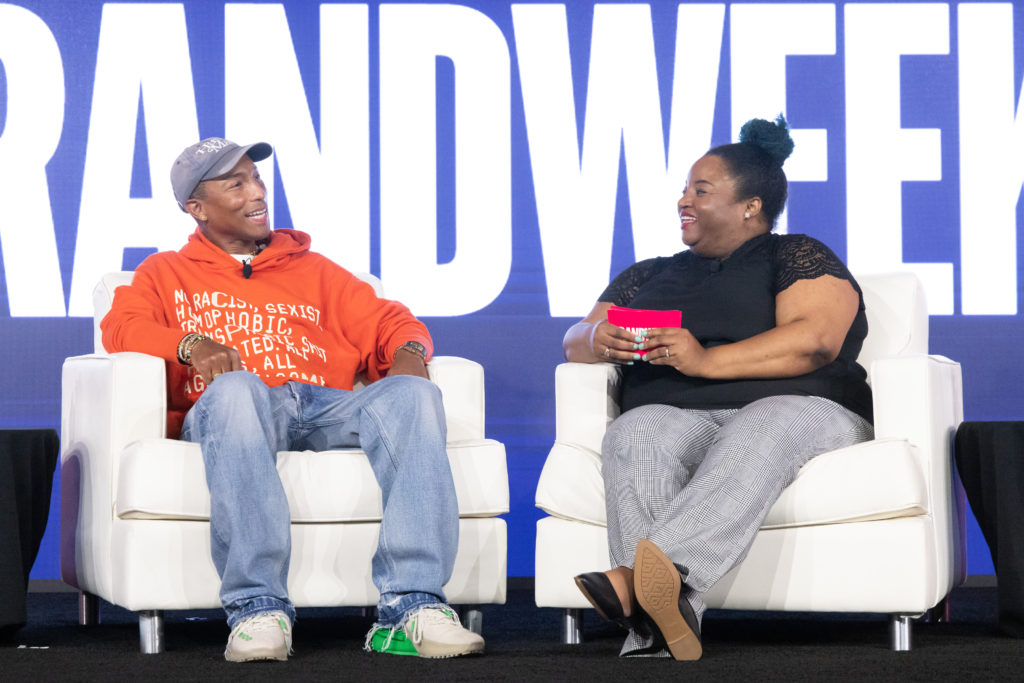
Pharrell Williams shares his lessons on branding
How Creators & Web3 Deepen Innovation in Communications
From sonic branding, to podcasts and the spicy evolution of what the next wave of the internet holds, there’s one constant that is undeniably true: marketing is no longer top down, it’s bottoms up. Creators and artists are driving innovation and continue to play a highly influential role in how platforms and brand strategies are developed, and how a more democratic and equitable web will scale. In fact, in 2022, TurboTax reported people filing for taxes with the profession of “creator” has increased 207%. TikTok also revealed that by 2030, 1 billion people will identify as “creator”. Creativity should be for everyone, and a career as a creator is a very accessible role for the future.
Creators hold social proof – what they say is more trusted than what brands say. Creators also have the power to do more than drive transactions – they can transform and inspire the world to support and understand important social causes. This in my opinion should be table stakes for anyone with a voice and platform. The audience paradigm that ‘reach’ generates results undoubtedly works best with content that converts…in fact, great creators are literally as distinct as an audience segment, with the audience/following and content variables to boot. ‘TikTok made me buy it’ is no joke – brands see a 26% lift when working with creators and 71% of consumers have said they were motivated to buy from TikTok creators (source: TikTok). And it’s key to know that your campaign launches the moment you engage a creator. It’s essential to respect creators – ghosting them is literally the worst marketing you can do. Think about it! #influence. Consider the $125 billion U.S. beauty industry, with one of the most competitive landscapes in the consumer world. With Walgreens Boots Alliance working to grow the UK famous No.7 brand in the U.S., they are looking to dial up storytelling for this challenger brand, and how to get other people to talk about you. And guess what’s working for them most? When 1 TikTok video equates to selling out in retail overnight, you take the hint.
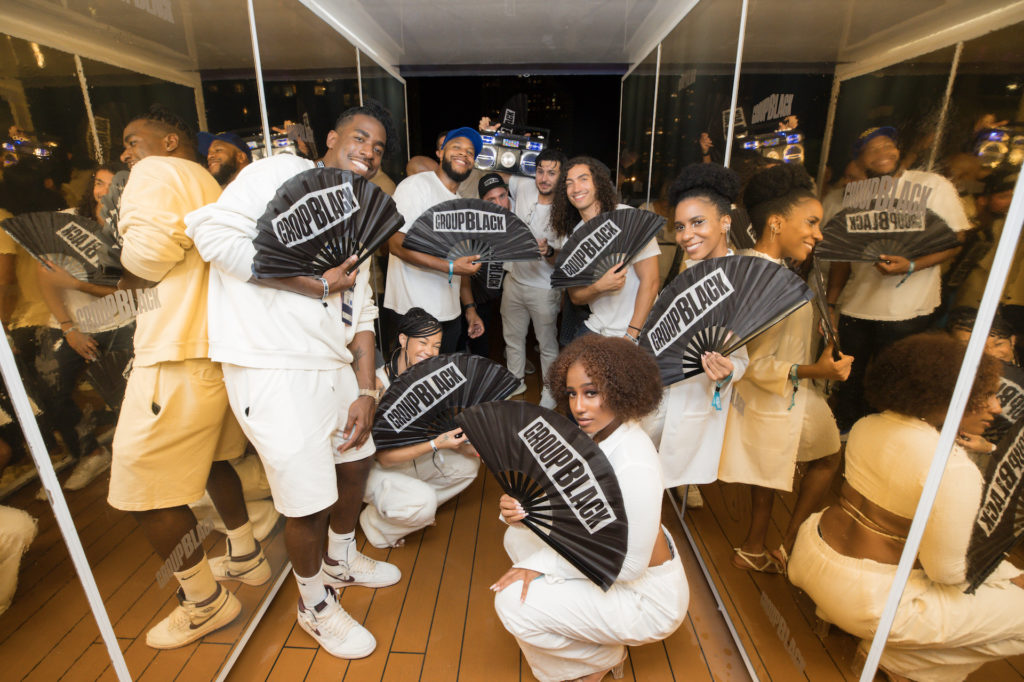
Group Black Party with Creators at Brandweek
Jamie Gutfreund, CMO at Whalar and Chelsea Simms, Global Head, Marketing & DEI at Logitech For Creators, also discussed the launch of the Creator Academy and their commitment to empowering and educating the next generation of diverse creators as well. Initiatives like this are key to ensuring success of all stakeholders. Get involved to get involved and do it with a conscience.
Good branded content holds respect for creativity. A great example of this is in music. For instance, have you ever asked yourself what your brand sounds like? Raja Rajamannar and MasterCard have a very strong and highly successful approach to the science of sound when it comes to music impacting feelings & emotion for a brand. In fact, their approach to sonic branding was designed it so well it’s made MasterCard the #1 audio brand in the world. So, what does it take to get there? The DNA of music for a brand includes 3 layers:
- Melody – it must be memorable, hummable, and neutral
- Sonic signature – a subset of the melody (where a lot of variance can take place to contextualize & localize the melody)
- Acceptance sound – how long one can tolerate listening to a repeating melody
It’s important to note that this is not an overnight game – association, awareness & attribution can take up to twelve years. But fast track those 3 layers by tapping local artists & creators globally to help you deepen your relationships with consumers worldwide? Priceless…as in, the Priceless album that MasterCard created with ten songs that is truly global as a result of their success in having their melody adopted by musicians worldwide – after the songs were organically successful topping the charts. Pure genius.
The more dynamic a picture you can paint the better it will be received. The New York Times revealed some data showing 59% of podcast listeners are GenZ & Millennials. How you communicate and share your audio matters – this can be referred to as mode matching. What are your listeners doing? What’s their mental load/environment/time of day? Different podcasts create different need states. Another fun fact – when it comes to podcasting, 79% of people prefer female voices over male voices.
Power in the hands of the consumer and participant. In the evolution on the web, a simple definition is as follows:
- W1 = read
- W2 = read & write → database, platform & server driven
- W3 = read & write & own → movement towards a more equitable internet
Web2 incentives the big 4: Alphabet, Facebook, Amazon and Microsoft. Web3 incentivizes anyone that wants to play, with way more democratic rules. And it’s like a universe with solar systems like Solana with orbiting NFTs, DiFi and so on. And businesses like Brave redistribute ~70% of ad revenue back to users based on their attention token model.
Web3 is expected to have 1B users by the end of 2022, and with the recent Etherium merge, we’re expecting a 99.9% more energy efficiency from the prior proof of work model as we move to proof of stake – meaning this should also inspire a ton of growth, which also means a greater need for sustainable solutions.
Good & Profitability Can Co-exist
The profiles of Corporate and “Good” historically haven’t gone hand in hand. But it’s beyond evident that brands and businesses need to show up differently, from how they manage resources to any campaign (and do they even need one?) in order to change not only their perception but action and behavior for the greater good. In other words, closing the action : intention gap.
Culture change is continuing work, which involves the work in and for communities. Mentorship, not just funding, is essential for young founders and even seasoned executives. And impact must go beyond campaigning – marketers have a job to do – facts don’t lie. Time to implement 360 impact over 360 campaigns. So how do we get there?
In terms of investment strategies and mentorship, Shake Shack’s CMO Jay Livingston shared his advice to not only build marketing into the product, but to invest in the most interesting cutting edge good people. By being around good founders, your long term investment will be worthwhile.
The Godfather of rebranding, Pharrell Williams also announced his news, the launch of Mighty Dream, his advocacy agency to make things equitable and bring solutions forward rooted in policy change. This is all on top of his music career, and nonprofit Yellow, helping determine how children process information to create a way for their brains to learn. Here are some of my favorite Pharell quotes:
- “The minute you stop being curious, you’re dead.”
- “All the No’s make that one yes super special when you’re an entrepreneur.”
- “Growth needs to age well, and brands should bring in change.”
From the Field to Fueling the Future with Gatorade & CMO Kalen Thorton is on a mission to empower young athletes & make sports more equitable & inclusive. The Gatorgae special sauce: do the work in community & layer that with the storytelling. A great example is the Love Means Everything campaign featuring Serena Williams bringing some of the best copywriting I’ve heard maybe ever – created in an effort to widen the audience of women’s sports & consumption of women’s sports. And, this work pays dividends beyond selling goods.
When it comes to shaping a #Multicultural Marketing Strategy, Johnson & Johnson Marketer Manoj Raghunandanan reminds us of some truths that need course correction:
- Black women are 3x more likely to die during birth than white women
- Lack of opportunities are blocking black women from becoming nurses (1/10 nurses are black in America)
- 47% of dermatologists saying they feel untrained to help people with black skin.
Johnson & Johnson is looking to solve these stats, from educating and putting images in textbooks to further education to create a fund to course correct these stats because product and content don’t cut it anymore.
Advice from the speakers:
- Tell consumers who you are, don’t just tell them what you sell. Come from an authentic place as a marketer, leader, brand & who you are, aligning that to the work & the consumer. Make sure to be distinct – have something meaningful to say!
- Deliver on insights, & explore different sources outside research like intuition
- Self reflect, ask if you can do more. Redefine impact beyond sales, & continually invest in storytelling for generations to come – think about their future. Question if it’s a problem worth solving.
- Modernize your brand by inviting everyone to get involved and engage. Driving diversity is how you’ll grow & it must start with marketing leadership team
- Ask what will make an impact with the community? Leverage creativity to infuse meaning and add value.
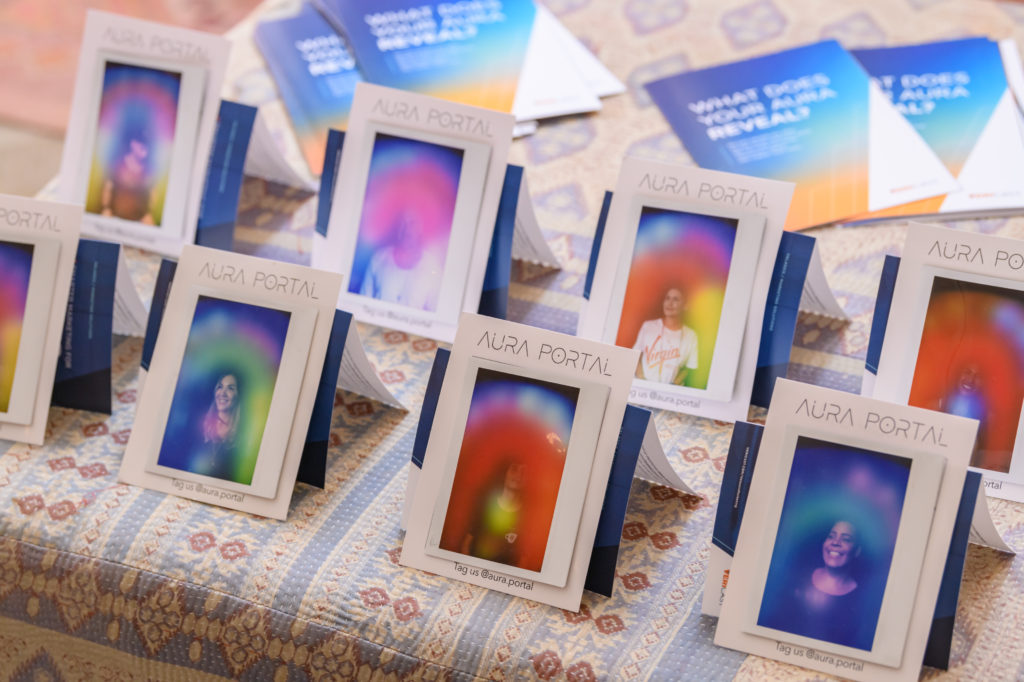
Aura readings for conscious business owners
Why Being a Utility Brand with a Playbook is Essential to Growth
How do you ensure growth without skipping a beat? Not easy. But when Brand Purpose honoree, Planned Parenthood (PP) states they Fight to Provide & Defend, they mean it. PP has been planning for the Roe vs Wade overturn and expected a strike. Luckily they had a playbook to engage everyone from celebrity to corporate & launched a campaign called Force of Nature, covering trans-affirming care to abortion aid. healthcare provider, and a safety net for many. You can support PP here.
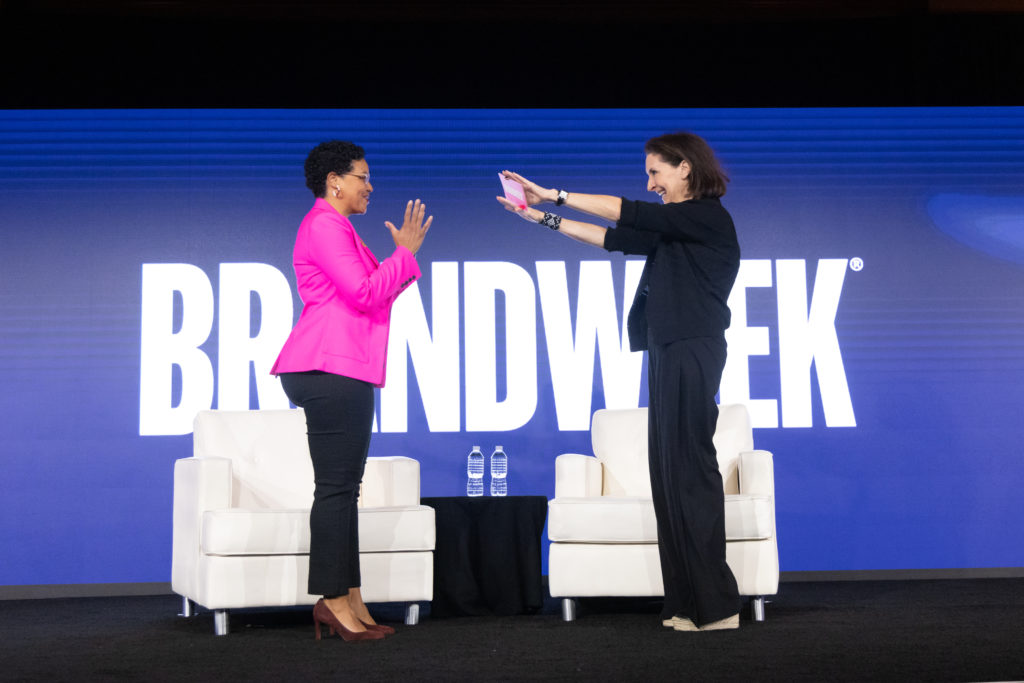
Brand Purpose Honoree, Planned Parenthood
IBM reminded us of the power of weather in our everyday lives and beyond. At the core of IBM’s Weather Channel lies a very distinct utility. But how does a consumer brand become a utility brand? And how does a utility brand ensure a sound strategy? Let’s start with this definition. A utility brand = a brand that consumers feel they need to have vs. one that’s nice to have. It’s about emotional dependency.
3 Attributes of a Utility Brand:
- Frequency
- Attachment
- Locality
And the anchor to a utility brand strategy? A power play! Which includes, the following elements:
- Relevancy – helping consumers see weather row connected to every part of their day
- Influence – how can we influence decisions
- Humanity – keeping it real
For The Weather Channel, this meant making sure that consumers understand weather as a knowledge source – this is especially true with Gen Z. It’s also about influence – ensuring people understand the role that The Weather Channel can play in their lives, and how human it can be – what can be leveraged in your toolkit to make an impact?
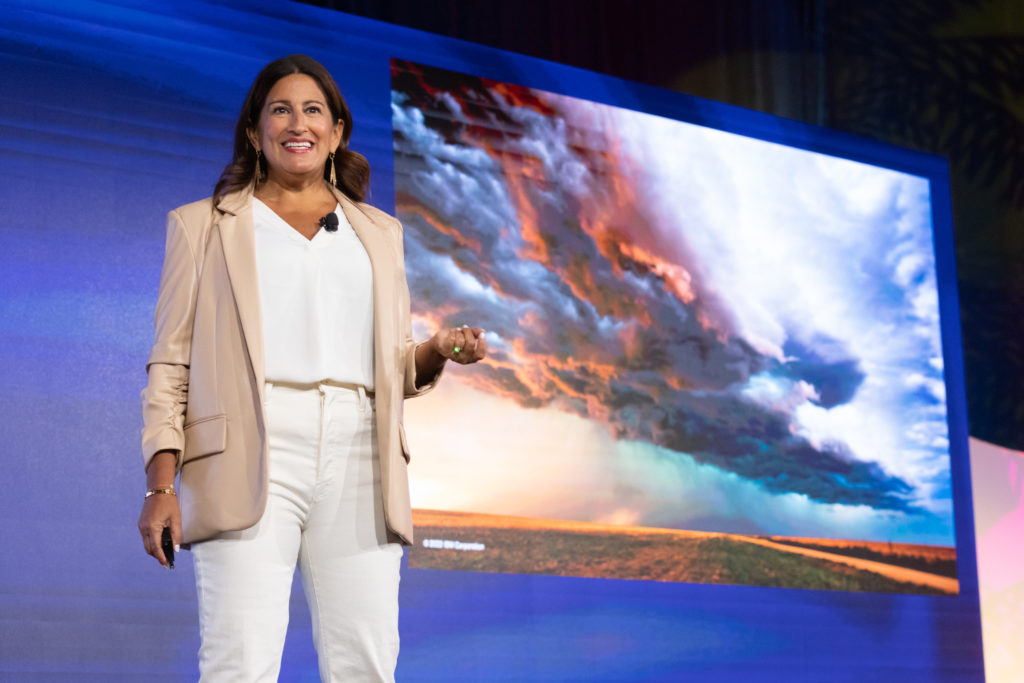
Randi Stipes, Chief Marketing Officer of IBM’s Watson Advertising and Weather
The Next Evolution of DE&I
As more brands define success through the lens of inclusivity, gender neutrality is not only a strategic business goal but a way to deepen the relationship of the consumer. From marketing messaging to product innovation, to hiring practice, gender neutrality is the future to inclusive marketing.
Maude, a personal care and sex toy brand has fantastic brand principles – they believe that gender inclusion begins with personal care. Fun fact: more than half of Canadian men actually want to use genderless products (source: Maude). Sex has no doubt a profound cultural impact, and Maude reminded the audience of how far we’ve come in embracing sex and gender. Historic communications are not only outdated, but misogynistic and very poorly marketed. Maude’s key takeaways:
- Inclusion – define your audience based on needs not demo
- Innovation – redefine category based on customer feedback
- Education – make it interesting, inclusive & timeless
- Advocacy – like sex education for social change
Fabletics also had a pivot when they were tasked to evolve a men’s line in a gender neutral world. Start by asking yourself: are you creating friction by trying to over segment and tell consumers what they want? Or are you listening to them? The goal is always to minimize the friction. Fabletics also reminds us that the choice you make at one time can and should change – so react quickly and see how customer behaviors are changing so that you can give them what they want. Some other new, gender neutral brands worth checking out for inspo include Collusion (via asos), Clothes for Humans, and Human Nation.
The NFL also shared some work that recognized diversity – from featuring the first transgender cheerleader 📣 in a spot, to including youth (though this is especially true in regards to ensuring a growing fanbase).
Mindfulness goes hand in hand with moving towards a more neutral world – where the lines and borders blur in the pursuit of a happier and healthier people and planet. Take Alo yoga for instance that aims to deliver mindfulness to the masses in the metaverse. Not just yoga clothes, the brand boasts a full wellness portfolio including two physical gyms now. But their vision in how they show up is all for people to “tune into themselves by turning out of the regular world “ by creating a safe & welcoming experience.
With nearly 60 million pieces of Alo digital fashion already “in orbit”, the brand also recogizes that brands are responsible to remove barriers and have done so with Moonpay, launching their first NFT at NYFW recently. Fun fact: Alo also accepts crypto in store and offers employees to be paid in crypto too.
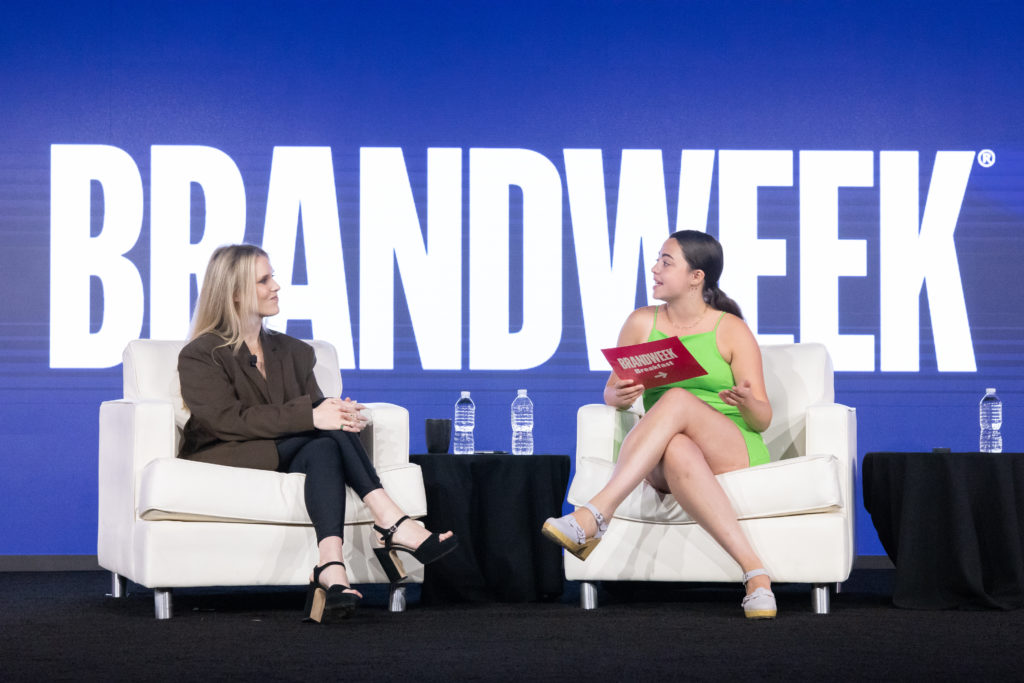
Angelic of Alo remarks that “Education and onboarding are the biggest keys to inclusivity in web3” sharing advice to “be in the space as a marketer before you hone a strategy for your brand, because you can’t lead a web3 team they way you lead a web2 team.” Cryptocurrency could also be a tool to enable action & distribute reward says Ty Haney – Outdoor Voices founder who is reimagining what a circular web looks like.
Consumers now have stake in the success of the brand in Web3, leveraging opportunities for co-creation by bringing in loyal fans further in along with incentive. Her new business Try Your Best enables communities to coordinate and be rewarded while also being measured. Engagement, accessibility and rewards protocol are the key to enabling creators to be the most valuable brand asset, along with collectible ownership.
Summary:
- Creator equity is increasing in value; brands and creators can partner in a variety of ways to ensure authentic, reliable, and ‘heard’ messaging as well as innovation for future products etc.
- Observing and listening to data, intuition and consumer behavior is crucial to giving your customer what they want. Reacting from a place of serving over short term bottom line objectives while proving your value as a brand with utility that’s needed, is the way to a long term, evolving relationship.
- Marketing is bottoms up – the voice of the people is only becoming louder and relevant. Lean into what’s being said, create co-ownership opportunities and focus on building community
- Modern brands are increasingly shaping culture, adding value by finding the intersection of insight, consumer passions, and clear need for change – ranging from rewiring educational foundations to creative collaborations with circular models both in Web2 and Web3.
Listen to my Brandweek posdcast with Adweek for more
Photo cred all images: Sean T Smith | IG: @stsphotovideo
Thank you to Adweek and to all of the speakers for their insights.
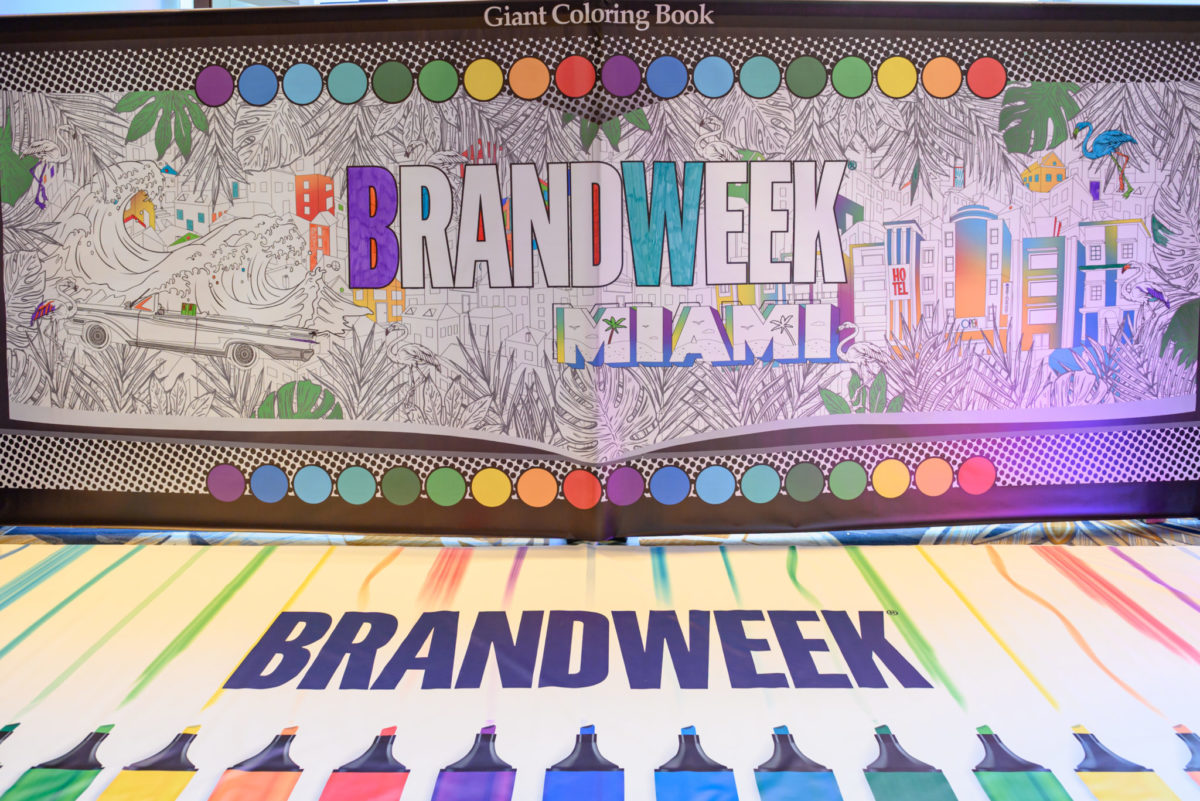
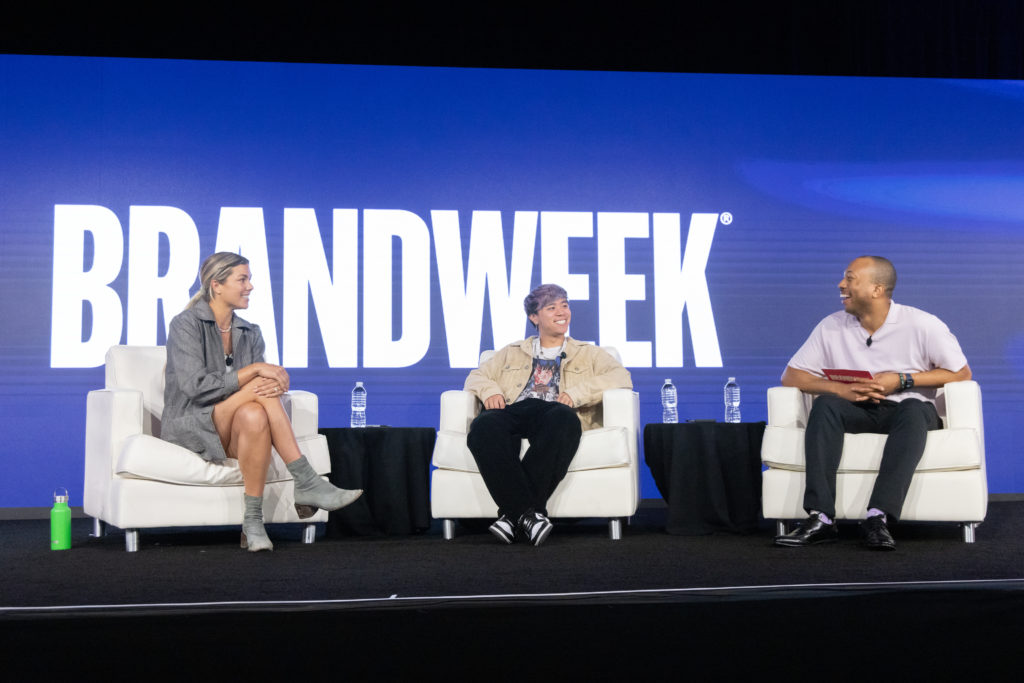
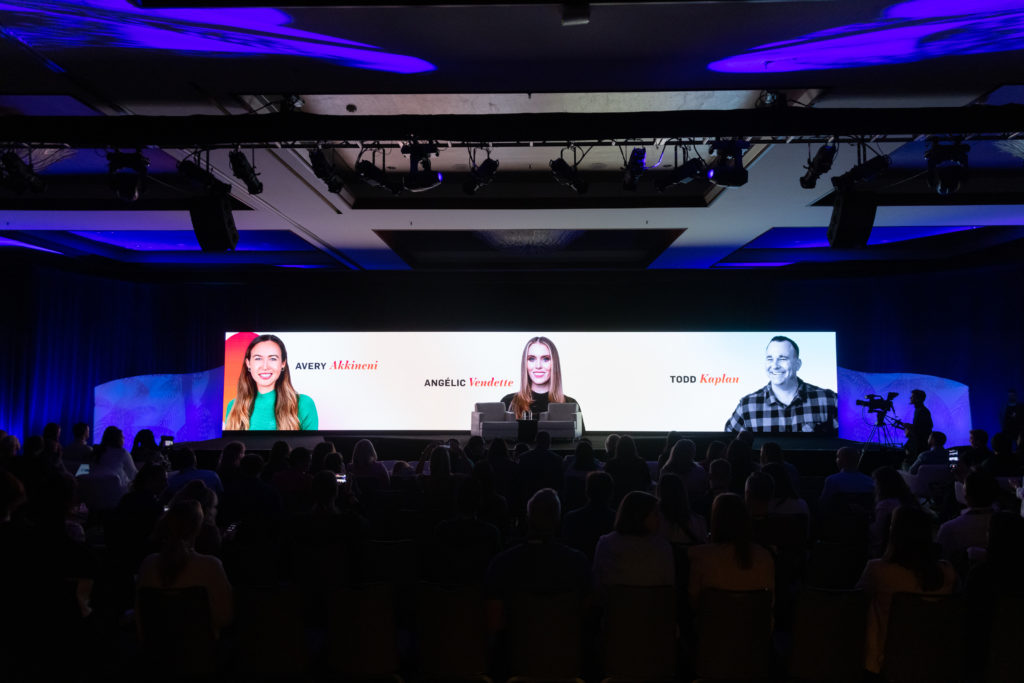
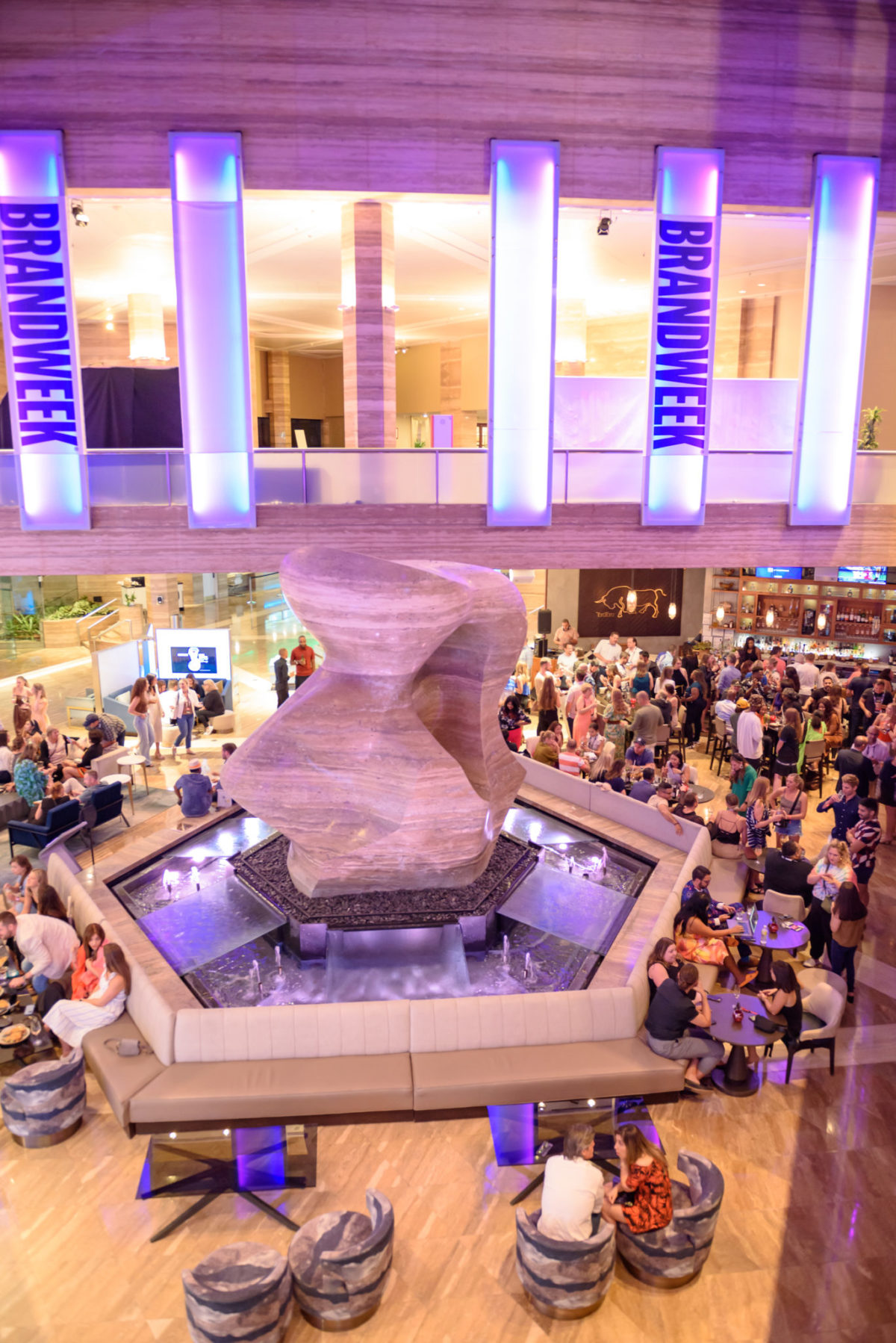
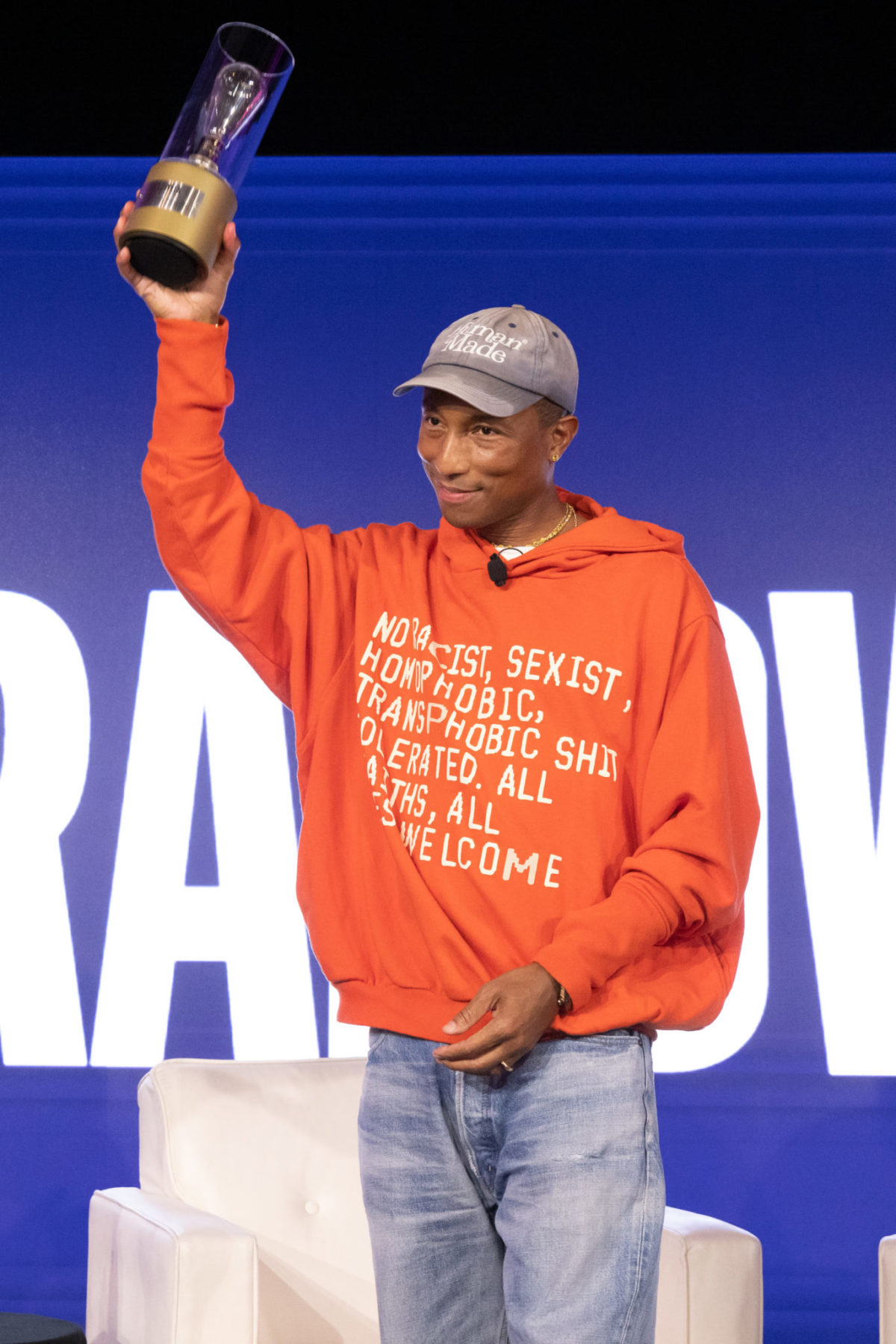

Found in
business, ecoluxury, gender, inclusivity, metaverse, startup, web3